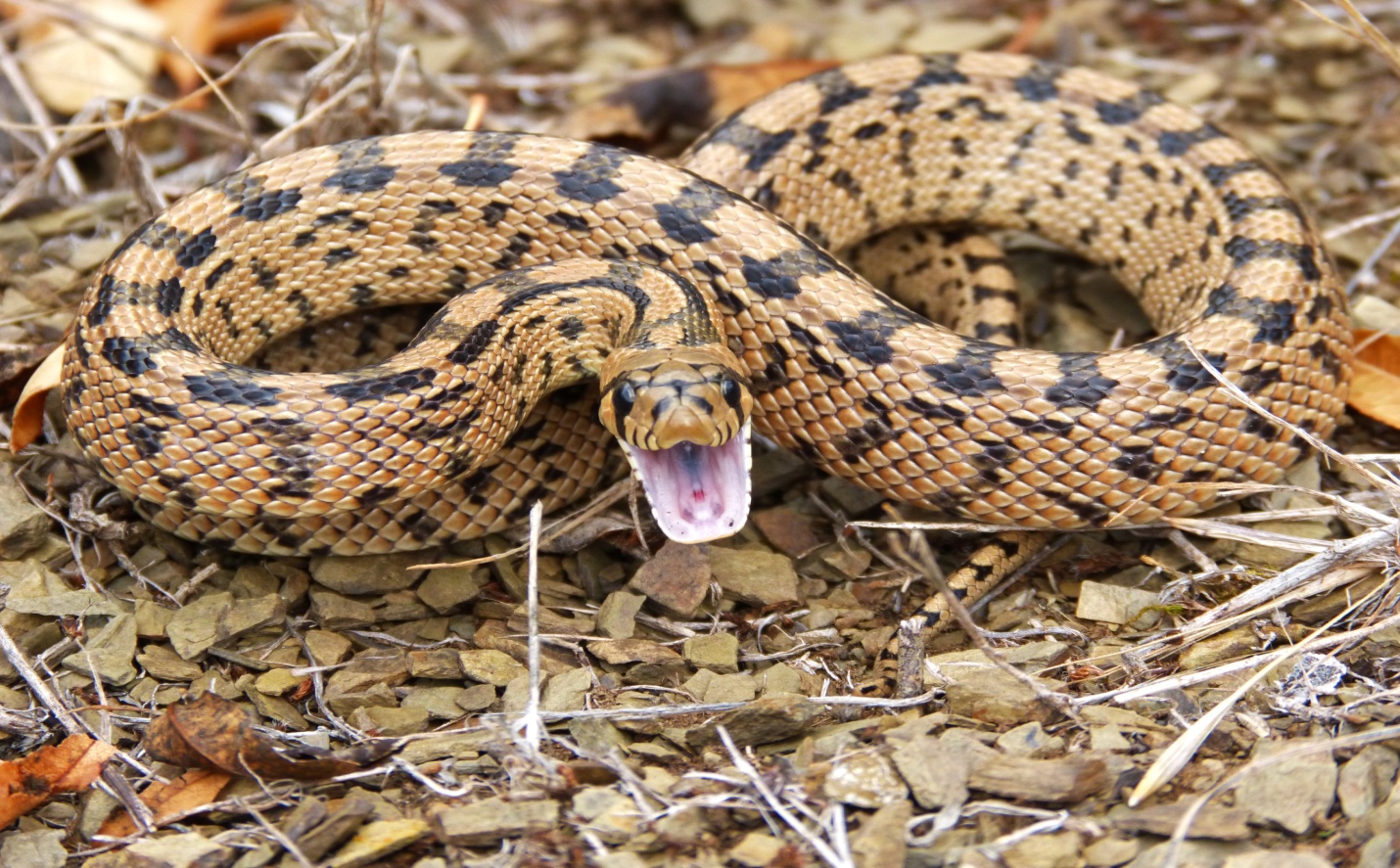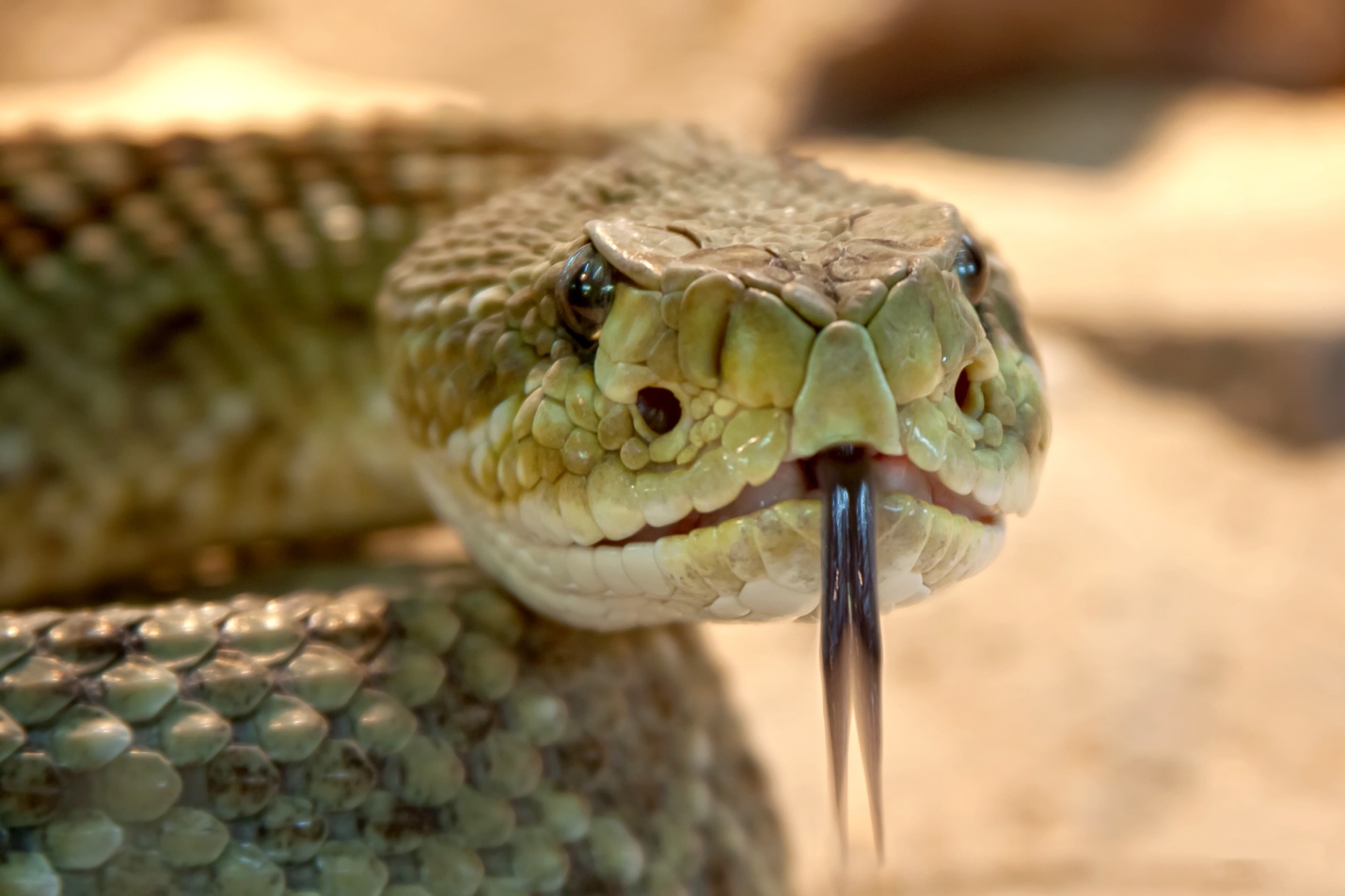The first thing that every individual should do upon spotting a snake is NOT PANIC. We all want to know what to do if you see a snake, right? So remember not to panic. And do you know why? It’s because more than half of the snake species are completely harmless, which means non-venomous.
Movies have created this vicious image of snakes in order to terrorize us to make the scenes more thrilling and enjoyable. But that’s not how snakes function. The fact is that they are as scared of us as we are of them.
Out of 3,000 species of snakes, only 20 are venomous. These include rattlesnake, water moccasin, cottonmouth, copperhead, and coral snake. And the chances of encountering such species are highly unlikely.
But let’s just keep these facts aside and face the ugly truth. We are scared of snakes, isn’t that right? And it doesn’t matter if they’re dangerous or not; a snake is no puppy. You always want to keep the snakes out your boots. Some snake bites take a bit of time to kill a grown-up man, but some will only take a few minutes. So what to do if you see a snake? Let’s find out, shall we?
What to do if you see a snake in the yard?
The best thing that you can do in such a situation is back away in the calmest manner. Because the possibility of that snake posing the tiniest threat is wafer thin.
Snakes don’t just attack you, unlike what you see in movies. If a snake spots you first, it will do one of two things. Either lay still or slither away.
They are threatened by human existence, so they choose not to live or roam around us. This is one of the reasons why you shouldn’t pick up a snake or touch it using a stick.
What to do if you see a snake during hiking?
When going on a hike, it’s important to wear snake proof boots. Every outdoor enthusiast knows that, right? It’s the best way to avoid snake bites.
Most national parks have signs put out warning you to stay away from particularly dangerous spots. So it’s better to stay on your trail and not invite unnecessary trouble your way.
Hiking through a landscape where you might find rocks, logs, or vegetation makes spotting snakes even more challenging. But if you stick to your trail, you can easily prevent stumbling upon venomous snakes.
You also need to know that sometimes snakes hide under rocks. So make it a point not to pick up large rocks on your hike. And if you’re with a dog, then it’s highly advisable to use the leash. Otherwise, your dog might just go chasing the wrong creature.
How to differentiate between venomous and non-venomous snakes?
Before we do that, you should know the difference between poisonous and venomous. Poison is what gets absorbed into your skin when you hold any poisonous snake. On the other hand, venom is the liquid that a snake injects into you using its fangs.
The best way to identify dangerous snakes is to look for slit pupils. Venomous snakes have that while non-venomous ones flaunt round pupils.
The thing about venomous snakes is that they always give you a sign before striking. So you get enough time to take a step back and escape. This they do by lifting up the head and sticking the tongue out. What they’re doing at this point is nothing but sniffing. Snakes don’t have a nose, so they smell with the help of forked tongues.
If you’re going to live in or even visit a neighborhood with dangerous snakes, then you should read all you can about them. You need to know what each venomous species looks like. This way you’ll be well prepared.
Calling animal control should be your first call to action rather than approaching the creature and trying to deal with the sticky situation on your own.
Treating snake bites
Now that you know what to do if you see a snake, it’s time to prepare for the worst. Against all the odds, if you get bitten by a snake, call 911 immediately. In such moments, staying still and calm helps in slowing down the distribution of venom inside your body. Keep the wounded area below your heart and cover it with a dry, clean bandage.
If you can, try to recollect the shape and color of the creature that bit you. Explaining the species of the snake to your doctor will help him or her in curing the snakebite faster and better.
These are the list of things that you should refrain from doing:
- Don’t apply ice or tourniquet.
- Sucking out the snake’s venom from the body is also not advisable.
- Cutting the wound using a knife tends to do more harm than good.
Conclusion
You will find a sea of options to choose from when it comes to buying snake proof boots. And they are created to offer complete protection from snakes, dangerous or not. This is one of the best ways to keep yourself safe from such wild creatures.
Even though spotting a snake can be quite alarming, not many species are venomous. And now that you know a little about how they function, you can handle the situation in a much better way.
We hope this is what you were looking for. We’ve made it a point to answer your question in the simplest yet most comprehensive manner. If there’s anything else that you would like to add, then please do so in the comments section below.
We hope to see you again soon. Have a great day!
About Author
Tony Lohman is an avid adventurer whose life revolves around fishing, camping, hunting, and all such outdoor activities. And with every new trip, his knowledge base widens significantly. So it’s these experiences that he likes to share with the world. He writes about outdoor gear and offers useful tips and information about things that make a difference out there in the wild.


